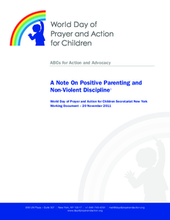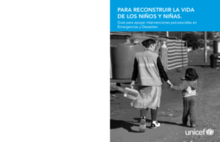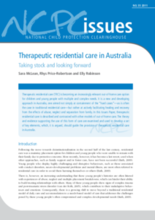Demographic Data
|
Sources: World Bank, UNICEF, UNDP HDR 2015, DHS 2013 |
Displaying 13091 - 13100 of 14557
This informational note for action, produced by World Day of Prayer and Action for Children, aims to support religious communities and partners in promoting “positive parenting” and non-violent disciplining of children.
"The European Union (EU), joined by its implementing partner the United Nation International Children Educational Fund (UNICEF), is supporting household families through a "Social Cash Transfer" scheme launched in the Liberian capital Monrovia on Thursday afternoon," according to this article from Almaghrib Today.
Este informe presenta detalles de talleres para favorecer el desarrollo y adquisición de conocimientos, habilidades y destrezas para lograr una adecuada intervención psicosocial en las poblaciones afectadas por el terremoto/maremoto.
This document contains the national framework for the child protection system in Kenya, developed with the intention of improving linkages between different sectors for more a more coordinated approach to protecting children.
This is an article about therapeutic residential care. Therapeutic residential care (TRC) is becoming an increasingly relevant out-of-home care option for children and young people with multiple and complex needs.
This report reviews Malawi’s national response for children affected by HIV and AIDS. The report notes significant progress made in improving the lives of children affected by HIV and AIDS and offers key recommendations for further improvements to national policies and strategies.
Save the Children Sweden commissioned this follow-up study to explore to what extent in South Africa, African customary law and practice promotes and/or inhibits the protection of children; how the positive impacts can be harnessed for the greater protection of more children; how the negative impacts can be mitigated; and finally how and who should be at the helm of any necessary developments of African customary law.
The Congressional Coalition on Adoption Institute’s The Way Forward Project brought together a group of international experts to discuss opportunities and challenges facing governmental and non-governmental organization leaders in six African nations (Ethiopia, Ghana, Kenya, Malawi, Rwanda, and Uganda) as they work to develop systems of care that serve children in and through their families.
This document analyses the review of 43 impact studies sought to methodically capture the known impacts of economic strengthening programs on the well-being of children (0-18 years) in crisis contexts in low-income countries.
This paper draws on the Luxembourg Income Study (LIS) microdata to paint a portrait of child poverty across a diverse group of countries, as of 2004–2006.








